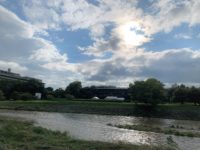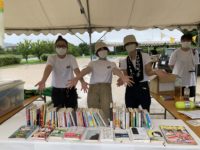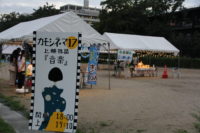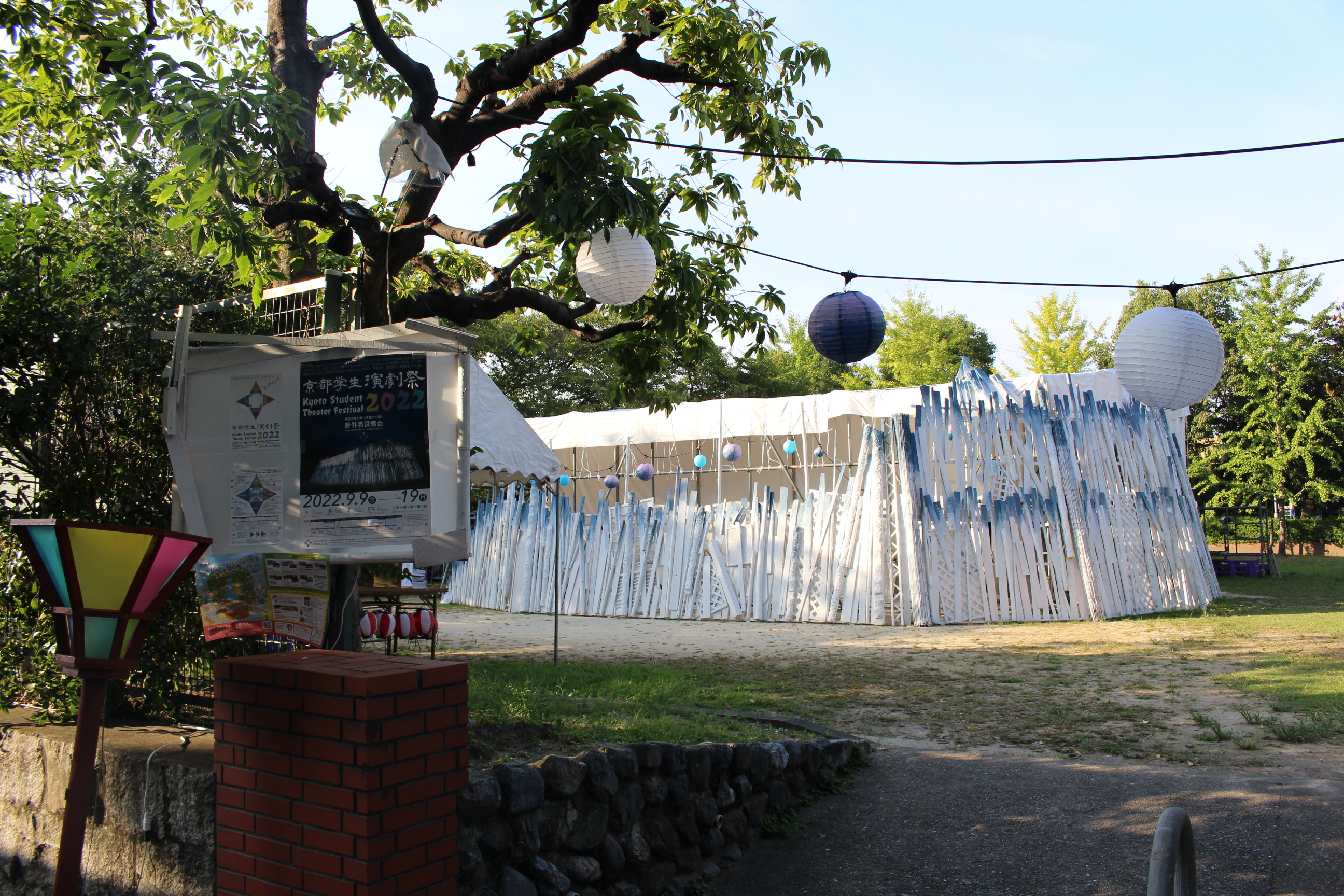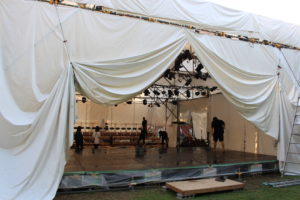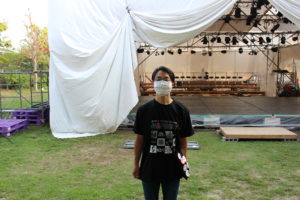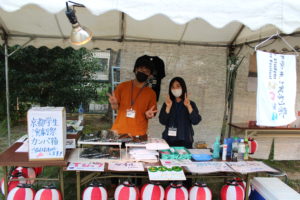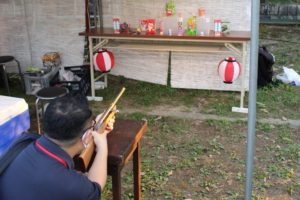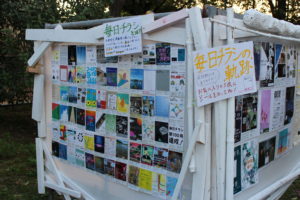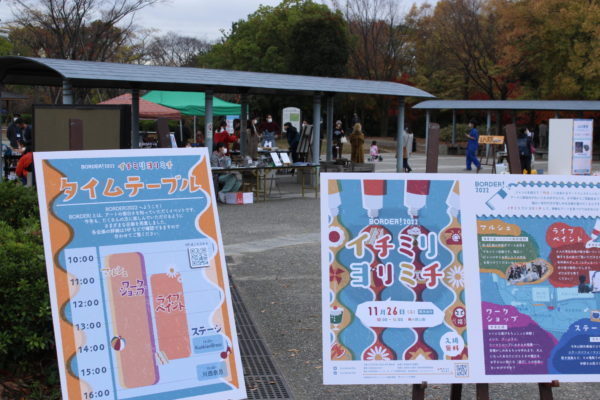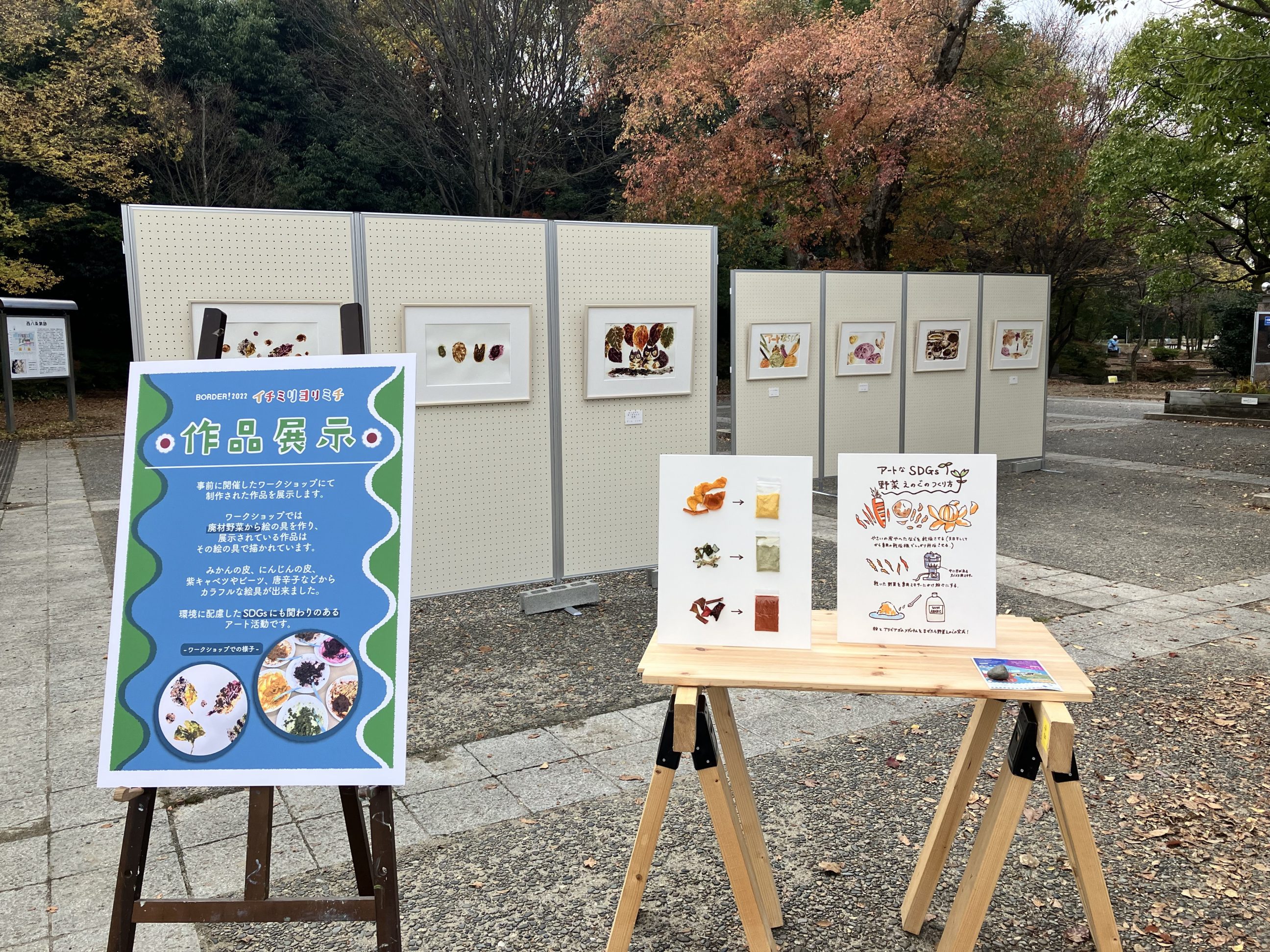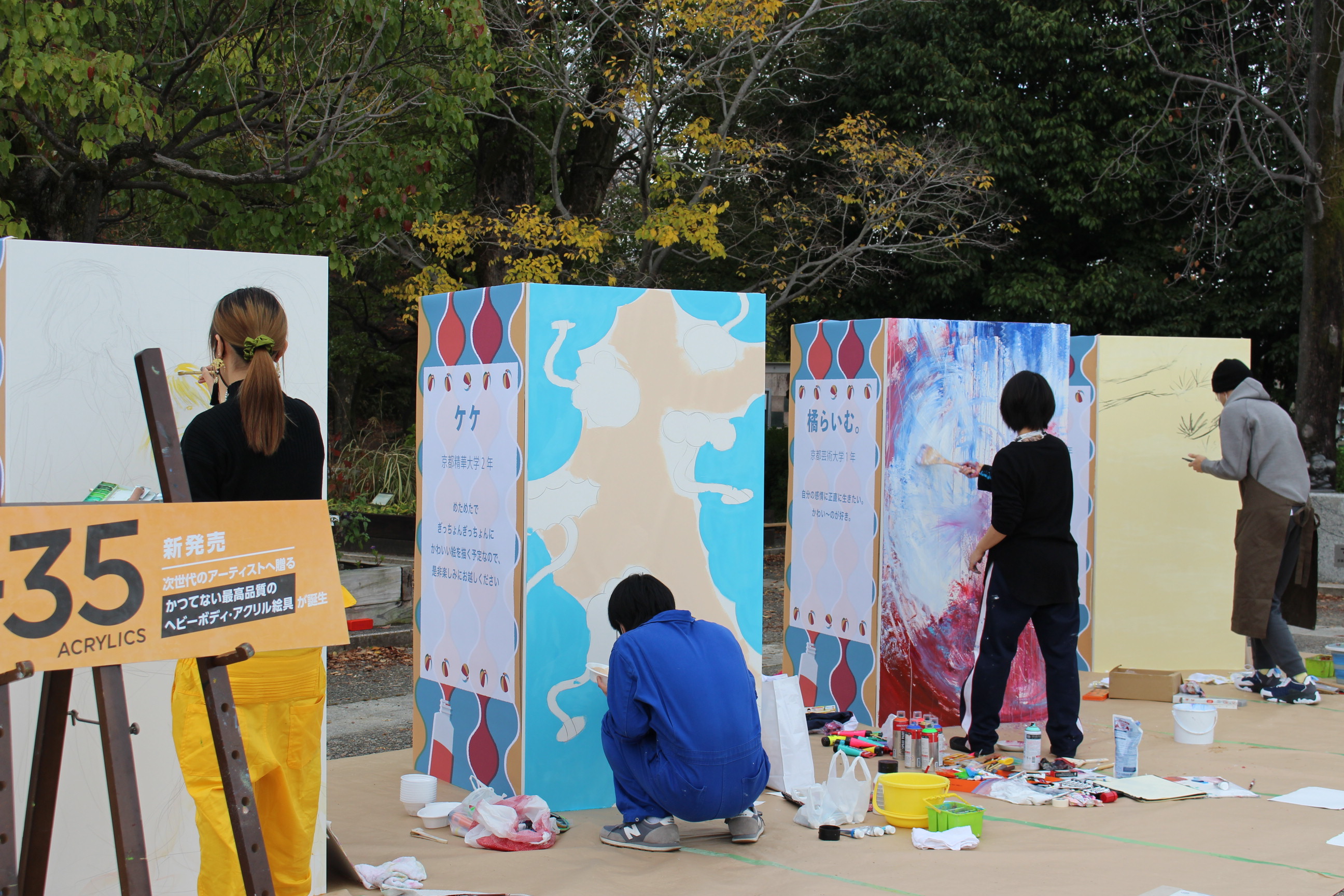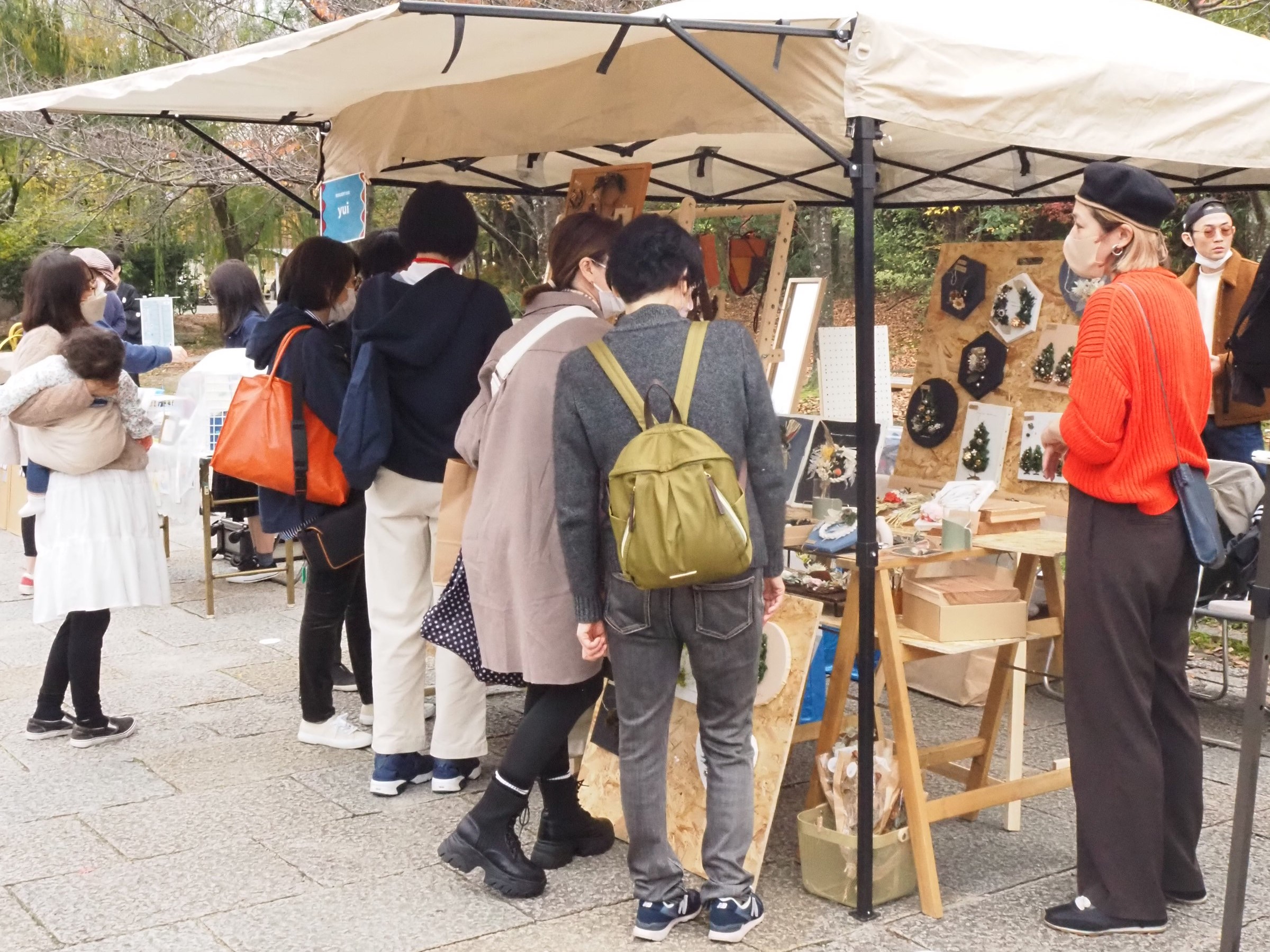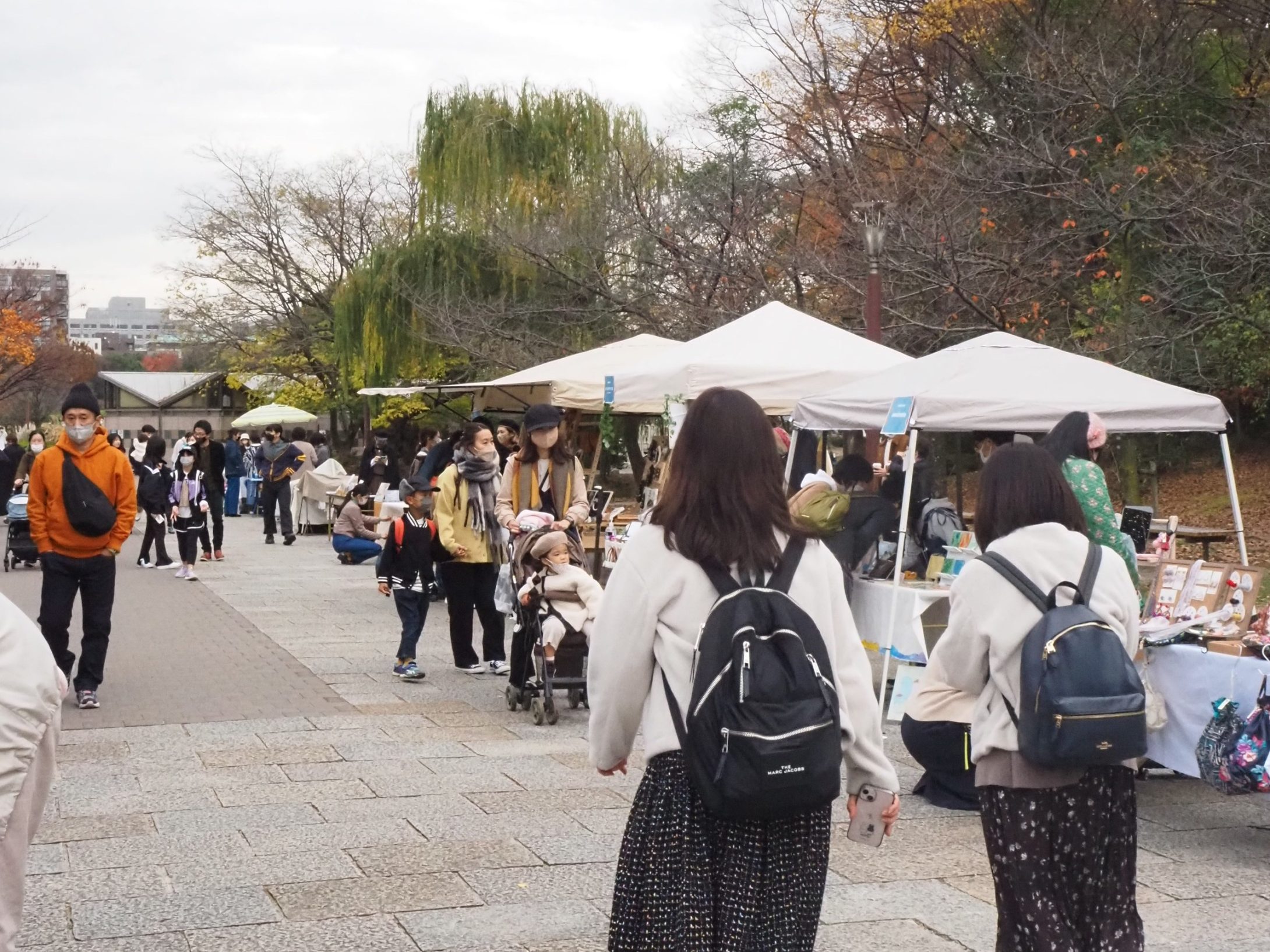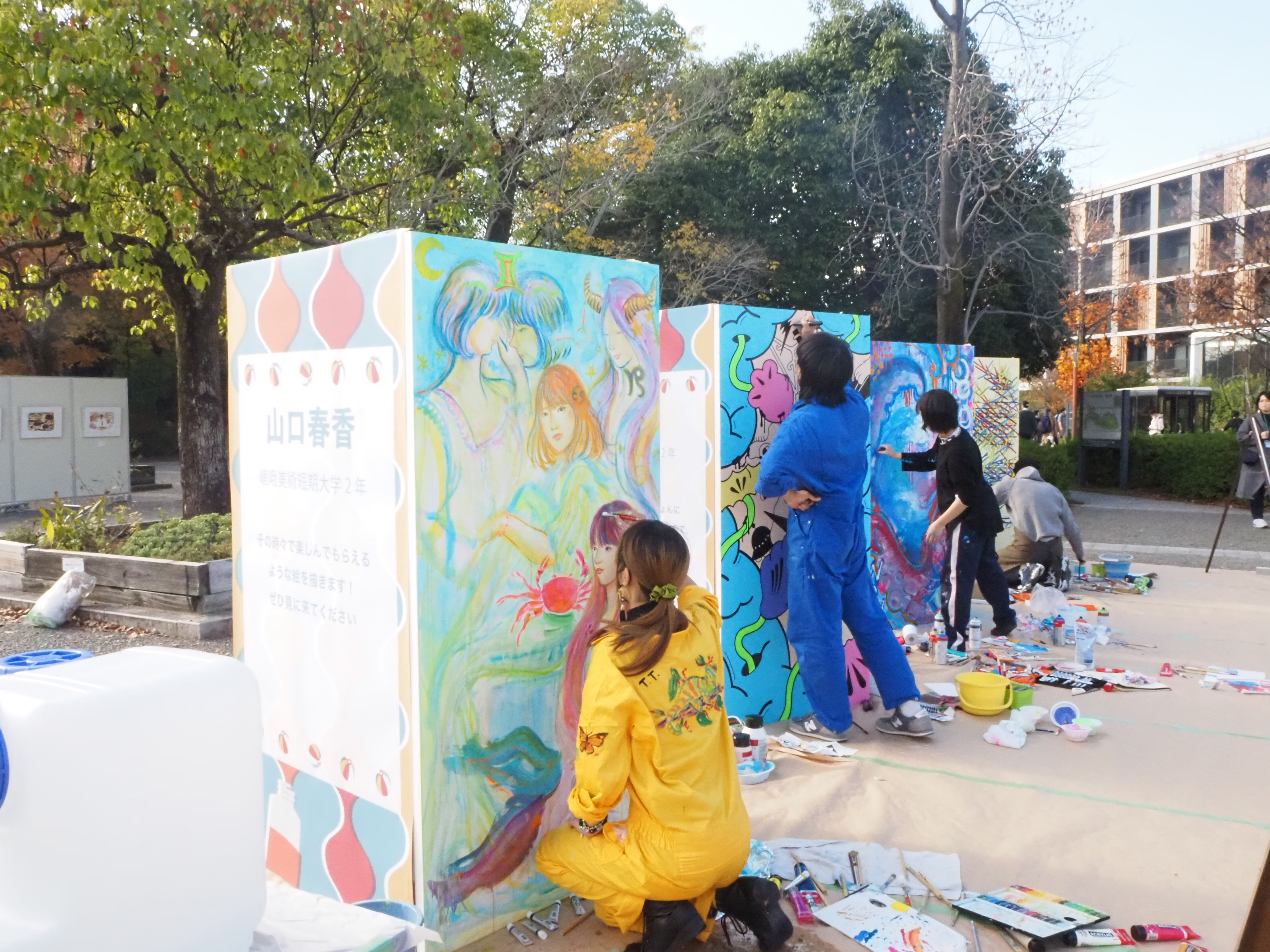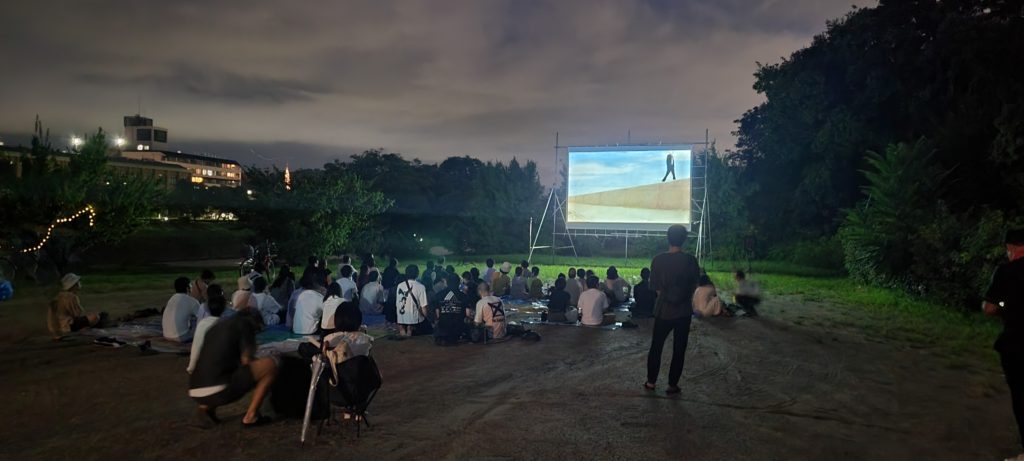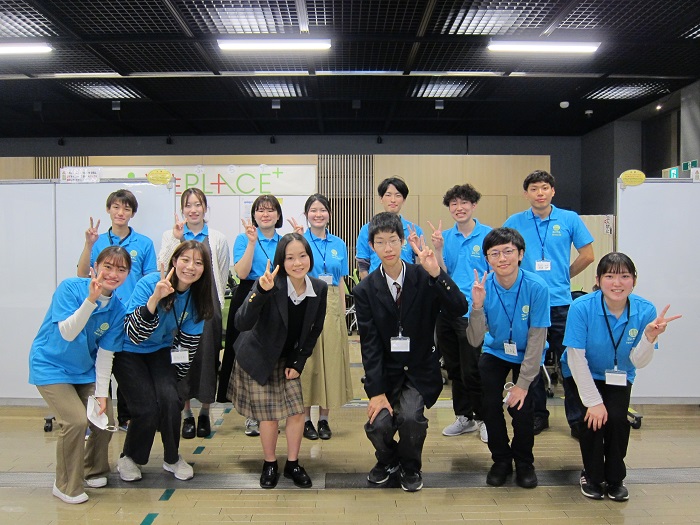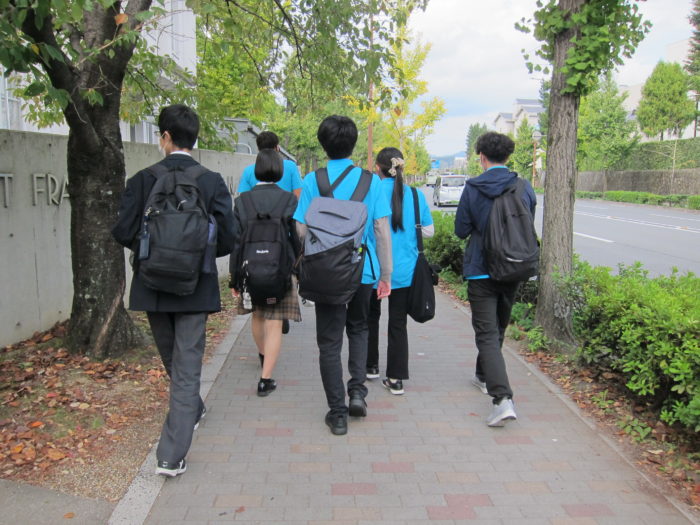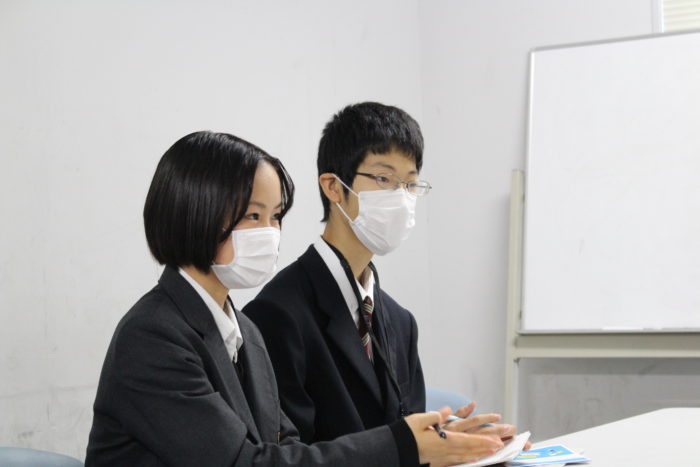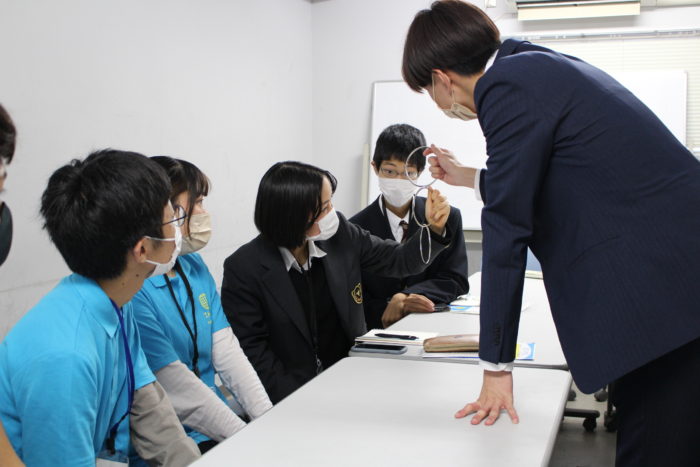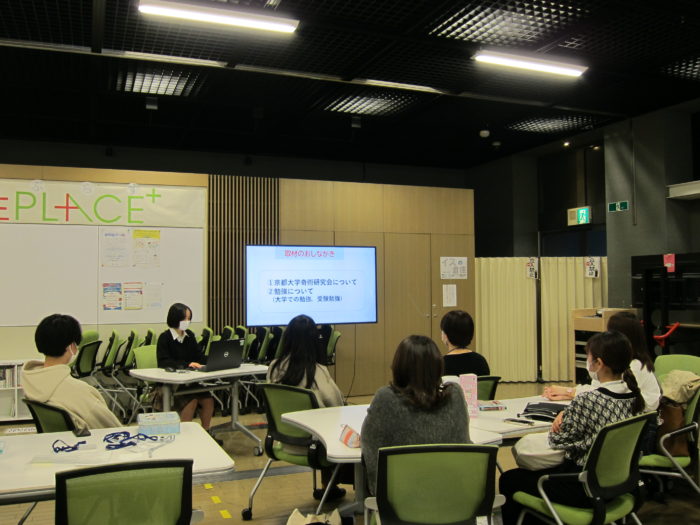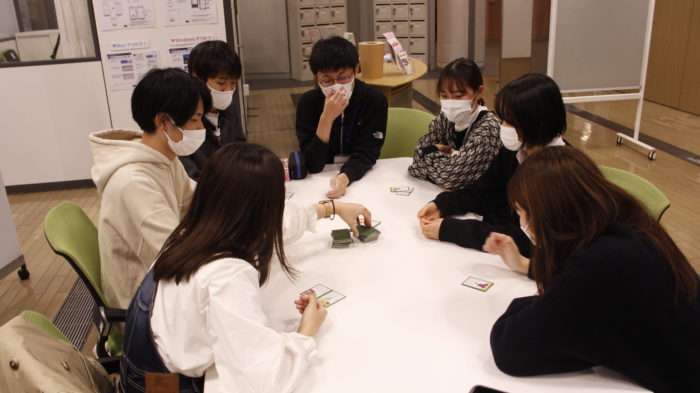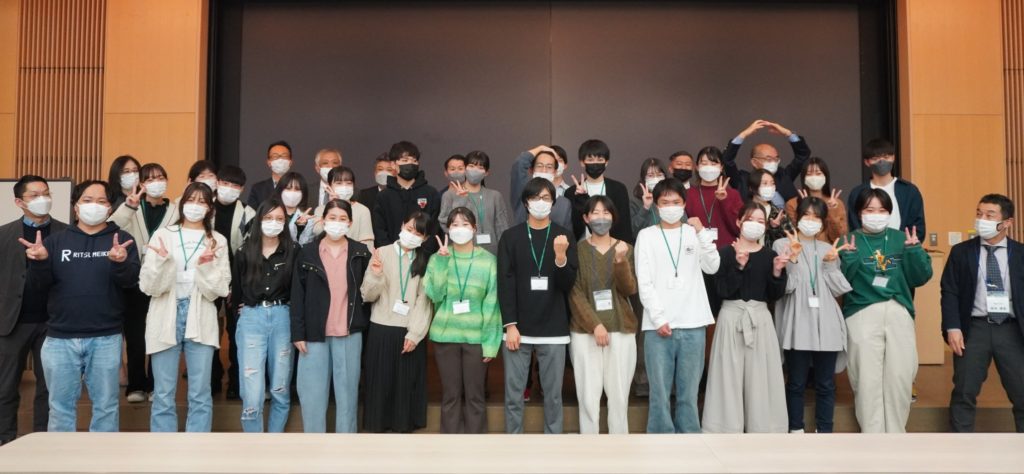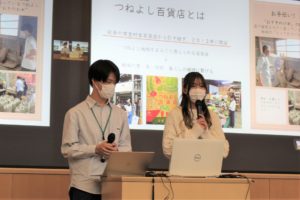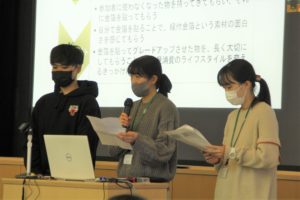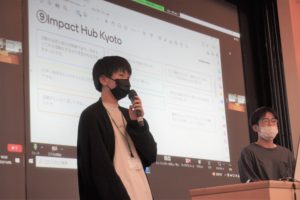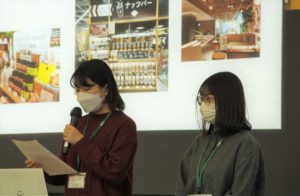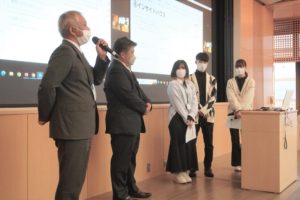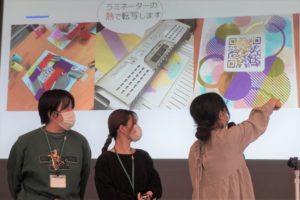We will introduce the initiatives of the Reiwa 5th year school town collaboration project.
The “Gakumachi Collaboration Project” is a “learning town collaboration project” in which universities and students and the local community collaborate to recruit and support projects and projects that work on urban development and regional revitalization in Kyoto.
We would like to inform you of the efforts of this year’s selected organizations!
【Activities】 Doshisha University, Ritsumeikan University, etc. Kyoto Student Theater Festival Executive Committee
On Sunday, September 10th, we visited the Kyoto Student Theater Festival 2023!
Held in the same Yosho district of Sakyo Ward as last year, a special outdoor stage resembling a “chrysalis,” a symbol of the Kyoto Student Theater Festival, caught the attention of passers-by.
The Kyoto Student Theater Festival will be held for a long time from 9/9 (Sat) ~ 16 (Sat) (with one day off in between), and it is a large-scale event with 9 participating groups. Last year, a wide range of people came to see the play, but this year, which was the second year the event was held here, the audience seats were so full that it was impossible to sit due to the establishment of the venue and the level of publicity of the event.
The planning and management of such large-scale events is carried out entirely by students. This time, a member of the Kyoto Student Public Relations Department wrote an article about the appeal of a student-led theater festival to the chairman of the Kyoto Student Theater Festival Executive Committee.
Please take a look at the interview article!!
Kyoto Student Public Relations Department Kotokare https://kotocollege.jp/archives/30303
 |
 |
【Activities】Otani University Otani University And House
On Wednesday, October 18th, we observed the activities of “Otani University And House”!
The main activity area is the Nakagawa School District, which is located in the northern part of Kita-ku, Kyoto City. The Nakagawa School District is a production area of Kitayama cedar, but in recent years, it has become difficult to pass on the traditional forestry industry due to the aging of the population, and it is losing its vitality, so students are involved in the revitalization of the area. As one of our initiatives, we manufacture and sell craft beer “Kyoto Nakagawa Manma Bea!”
The “manmacha” used in beer is a tea that has been cultivated in the Nakagawa School District, but it is said to be close to the old type of tea, and it is a slightly bitter and flavorful tea. Manma tea is produced together with residents, and the subsequent beer production and sales are sold online and in stores with the cooperation of welfare offices.
This time, we visited Otani University to observe the process of attaching labels to bottles of “Manma Bea”. Leading up to this process, there is a work process of picking and sorting, steaming, and roasting manmacha, and then you are asked to brew it. According to Mr. Dehara of Otani University And House, the taste changes depending on how the tea is brewed, so it is difficult to keep the result consistent every year.
About 200 jars with labels (it was a long label!) It is a difficult task that requires patience, but when I saw that everyone worked together to make bottles with labels one after another, I felt the goodness of teamwork. I think the joy of having something we have created become a product and sold in stores is great.
Through the purchase of beer, the price of the tea leaves will be returned to the community welfare activities in the Nakagawa area. Otani University And House also conducts monthly activities to interact with residents, such as quizzes and brain training.
I’m looking forward to the sale of “Manma Bea” again this year! The taste is that the taste of tea spreads softly at the beginning, and the bitterness of beer is less. It seems to be easy for women to drink.
*For more information on Otani University And House’s activities, please check the Instagram below!!
https://www.instagram.com/otaniandhouse/
 |
 |
 |
 |
Kyoto Seika University “City, People and Music” Seminar
10/21 (Sat) I visited the [Ichijoji Fest Autumn Festival] where the seminar “City, People and Music” seminar will hold a workshop!
Speaking of Ichijoji Temple,
・ The image of “ramen” is too strong, and other attractions are not conveyed.
There is a temperature difference between long-time residents and newly moved residents.
This issue emerged from a questionnaire targeting shopkeepers at Ichijoji Temple. We want to solve such problems and revitalize regional exchanges! In addition to this, we decided to hold the workshop because we wanted to promote exchange with the local community by having people come into contact with music, taking advantage of the strengths of the “City, People and Music” seminar, where there are many students majoring in musical expression.
On the day of the event, it was a refreshing autumn sun, and the venue was Ichijoji Park, which was crowded with people from Mr./Ms. from the morning. There were a lot of food stalls, fair-day corners, stage events, workshop events, etc., and many families with small children came Mr./Ms.. According to the organizers, the number of visitors was about 3,000.
In the workshop “Fun to make and play with sound” in the seminar “City, People and Music,” the participants were asked to make four types of musical instruments (a kalimba made from hairpins, a flute made from straws, a bracelet made with beads in a tube, and a drum made from paper tubes and balloons) and enjoyed playing with sound with the instruments, which was a great success with parents and children who enjoyed playing musical instruments. In order to prevent children from getting injured or accidentally ingested by the instrument, and to make it easier to make, the material, shape, size, etc. were repeated many times. Thanks to such efforts, when I was interviewing the representative Mr./Ms. Ogawa on the day of the workshop, children visited the workshop one after another, and it was so successful that the interview was interrupted each time.
In addition to holding workshops, the seminar on “City, People, and Music” also participates in garbage picking activities at Ichijoji Temple. Therefore, he said that he is deepening exchanges with local people.
Please continue to do your best to revitalize Ichijoji Temple!!
 |
 |
 |
 |
【Activities】Kyoto City University of Arts, Kyoto Seika University BORDER! Executive Committee
On Saturday, November 25th, I went to the art festival “BORDER!2023“!
This year’s venue is Rissei Garden Hulic Kyoto (formerly Kyoto Municipal Takakura Elementary School). It was held near the Takase River in Shijo.
「BORDER!The Executive Committee, whose members are mainly art university students in the Kansai region, plans, operates, and implements art festivals with the main objectives of creating opportunities for citizens to come into contact with art and fostering young artists.
This year’s live paint was double the number of installations last year, making it a sight to behold. In addition, for the first time in a long time, a kitchen car was arranged, a space for eating and drinking was prepared, and the marche, which was mainly Mr./Ms. students, was crowded with many people. The artist of the live painting was commissioned by a student of an art university in Kyoto Prefecture, Mr./Ms.! It was truly a sight to behold as he completed the painting on a canvas that was taller than his own height in four hours. On the morning of the day, the weather was not favorable, and it rained on and off repeatedly, and it seems that the cancellation of the live event was considered, but it was decided somehow, and all the painters Mr./Ms. wore raincoats and did their best to draw. It was impressive that a bottle was placed in front of the painting so that you could throw money to the picture that you felt was wonderful.
In the participatory art, acrylic sheets that were scheduled to be discarded during the Corona disaster were collected and reused as canvases. Children were happily drawing pictures on the large acrylic board, and many families with children could be seen. Around the acrylic plate, cardboard art works of unique animals are displayed, and BORDER!It seems that it was created at an event held at the Kitaoji Aeon Mall led by the team.
Many of the website designs and posters for venue information are also tasteful, and I felt that they were truly a creator group.
We look forward to more events in the future where you can get close to art!
For more information on BORDER!’s activities, please visit the following website.
|
|
|
 |
 |
|
|
【Activities】Ryukoku University, Hanazono University, Kyoto Women’s University, etc.
On Saturday, December 9th, in the Kamishichiken and Daikokucho areas of Kamigyo-ku, the “Miyako Light” light-up event was held for Kyomachiya, which aims to preserve traditional techniques and culture for the future, and we visited it! This is the second interview following last year’s interview.
This year marks the 19th year of the Miyako Light program, and the executive committee consists of 15 university students from Kyoto and Osaka. While many organizations are struggling to recruit members, when I asked the representative, Mr./Ms. Otaka, how they recruit members, he replied that they analyze the characteristics of each SNS and use it appropriately for recruitment. I didn’t know that it was analyzed so closely, and I was able to learn more about the approach to the event through the interviews.
At the actual event, due to the easing of Corona regulations, there were events that everyone could enjoy, regardless of age or gender, such as the sale of event-limited “Miyako Light Original Cake” in collaboration with local shops, an exhibition of milk carton lanterns created with local children, and a photo rally event, and it was impressive that there were more families than last year. In addition, the members of Miyako Light thought about the sounds reminiscent of machiya, recorded the voices of children in the area and the sounds of looms, etc., and incorporated them into the music. At the event venue, music with a relaxation effect was played to match the illumination.
In addition, from this year, the executive committee members of the event wore matching jumpers so that they could be easily recognized. I was able to feel the consideration given to making it easier for local residents and participants to talk to me, and the unity of the team.
Every year, with the cooperation of the shops and local residents, I am impressed that such a large-scale event is held by students alone. It was a relaxing event where you could feel the warmth as well as the wonderful lighting. You can also take photos that look good on SNS Mr./Ms.!
This year’s event has come to an end, but please take a look at the activities of “Miyako Light” on the following site!
・http://miyako-light.anewal.net/
・https://www.instagram.com/miyako.light/
https://twitter.com/i/flow/login?redirect_after_login=%2Fmiyako_light
|
|
|
 |
 |
|
|

















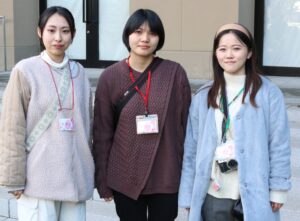






 On Saturday, December 3, 2022, the report collection of the 20th High School-University Collaborative Education Forum “High
On Saturday, December 3, 2022, the report collection of the 20th High School-University Collaborative Education Forum “High 